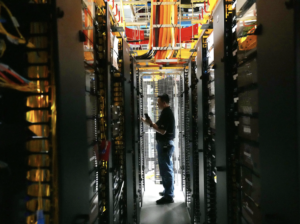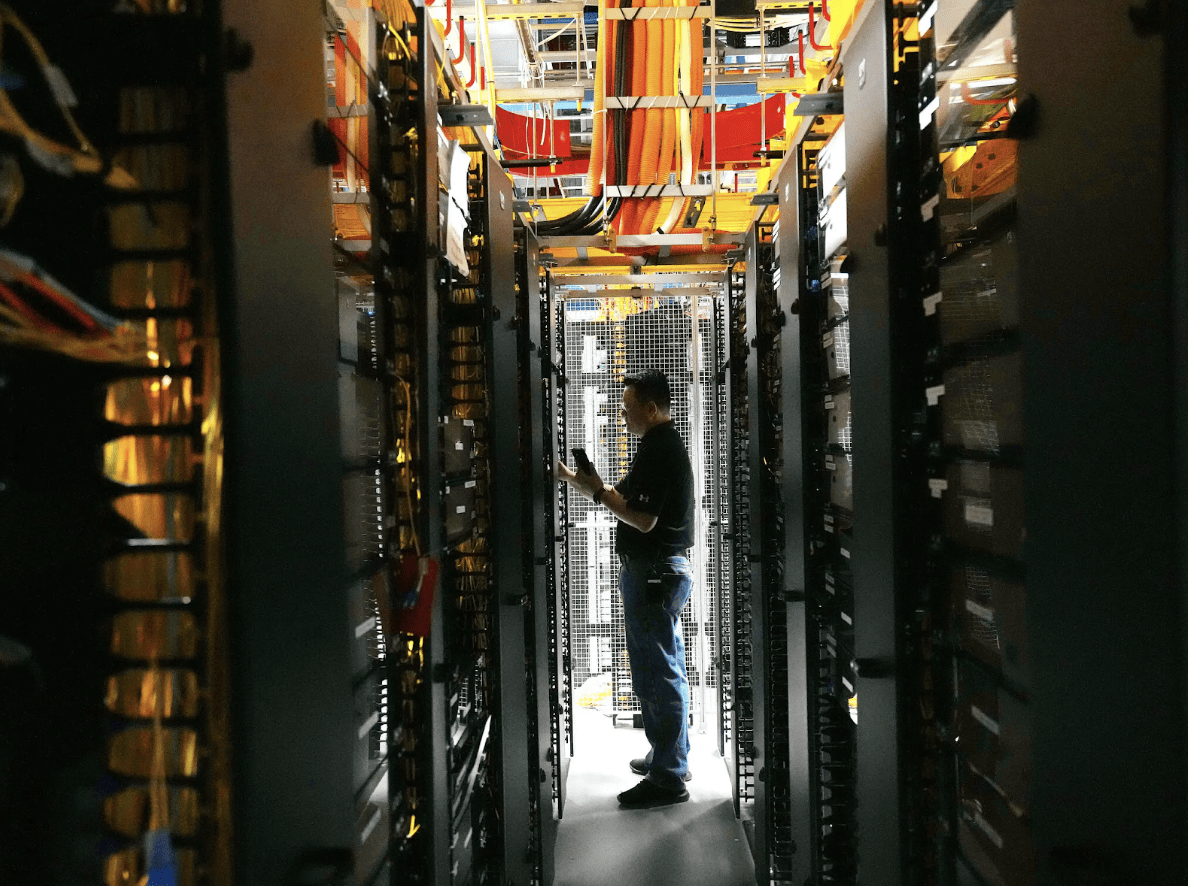
Credits: artificial-intelligence-data-centers-green-power.html
As students, many of us have become intimately familiar with generative artificial intelligence tools. Regardless of whether or not you personally use AI, it is impossible to ignore. Professors and administrators have changed assignments and academic regulations to accommodate a new academic landscape altered by the emergence of these AI tools. From the way students approach assignments to how classes are taught, AI is currently transforming our lives.
Yet the frontier that AI is expanding into is not restricted to the digital dimension. Rather, AI is embedding itself increasingly into the natural landscape through the construction of massive data centers. Behind the AI interface that we interact with are models that rely on huge amounts of computation power. It is estimated that current machine learning models have required computational power to double every six months since 2010. The amount of energy used to train the AI model GPT-3 alone is equivalent to the amount of energy required to power 1,450 houses in the United States for a month.
Increased usage of AI, combined with the increased use of cloud storage, has increased the demand for data storage facilities that house servers. These centers are filled with computing technology, without which AI would not exist. Changing work behaviors, including more emphasis on remote work, has also increased the demand for more data centers. Microsoft, for example, has recently spent more than $10 billion on increasing the capacity for cloud computing every quarter.
Increasing the capacity for cloud computing and data storage will require enormous amounts of new construction. This would involve more physical buildings, computers, and other technology. Ali Fenn, the president of Lancium, a data center management firm, has described the rush to increase capacity by building sites as a “land grab.” Tech, construction, and investment firms are competing and rushing to purchase real estate to develop into new data centers. The boom to purchase land is represented by the fact that in the past year, there was a 25 percent increase in data center construction.
In practice, this means more natural land is being converted into property for tech companies. Yet it also puts further strains on natural resources in the surroundings of the data center. In order for the computers within data centers to function, they require massive amounts of water for cooling. In a partially built Microsoft data center in Arizona, it is estimated that, after completion of the entire site, it will consume 56 million gallons of water every year. Data centers as a whole could require between 1.1 trillion to 1.7 trillion gallons of water (6.4 trillion liters) by 2027. Many of the new centers, like the Microsoft Arizona complex, are being built in areas already facing increasing droughts and strain on drinking water supplies.
In addition to consuming massive amounts of water, data centers also require vast stretches of land. Data centers used to be built close to users, but the growth of AI has meant that proximity isn’t as important since training AI models has become a greater focus than consumer demands. What this has resulted in is that many new data centers are being built in vast stretches of land that haven’t already been developed in the United States, including converting farmland as well as constructing in the desert. The construction of these centers, especially ones being built further away from existing tech structures, generates in itself an extensive environmental impact due to the necessary infrastructure to support the building and its energy demands.
In terms of energy usage, the servers behind AI are expected to grow to potentially require the same amount of annual electricity as Sweden. In more concrete numbers, it is estimated that by 2030, AI could consume up to 21 percent of the global electricity supply. In the United States, AI is putting increasing strains on the aging infrastructure, increasingly straining an antiquated power grid as companies continue to push to build more data centers. The fact that many of the data centers are still operated using fossil fuel-generated electricity, rather than renewables, makes this high energy consumption especially problematic. Perhaps if companies made more conscious efforts to use energy from renewables, rather than fossil fuels, it could mitigate some of the environmental costs.
Yet, even if new data centers begin to rely entirely on renewables, the backup generators and systems for the centers oftentimes require non-renewable energy. The systems frequently use natural gas and diesel rather than renewable energy, which many in the industry argue might not be as reliable as fossil fuels. Thus, the increasing needs for data centers in terms of land, water, and energy threaten local communities, as well as the fragile ecosystems that they draw on.
The paradox of these technologies is that they promise to improve our world, and to even combat problems like climate change, yet they require so many natural resources to function. Reports estimate that artificial intelligence tools might be able to help maintain infrastructure and help promote a green transition by increasing efficiency across a multitude of industries. Yet, if technology companies refuse to live up to the pledges they have made towards climate goals, it is likely that these technologies will strain our fragile planet. Microsoft pledged in 2020 to be both carbon negative and water positive by 2030, yet its energy and water consumption has dramatically increased since 2020 and the company intends to keep building more data centers to meet demand. In this way, the short-term financial interests of these companies seem to be misaligned with the steps required to prevent increased warming of the planet. As long as there is a dissonance between corporate profits and green actions, can we really expect companies to act any differently?
Other posts that may interest you:
- The Trouble with ‘Ecocide’
- Carbon dioxide removal – hit or miss?
- Local Victories for Turkish Opposition — A Sign of Hope?
- Are France and Japan a Mismatch Made in Heaven?
- A Reflection on Dark Tourism
Discover more from The Sundial Press
Subscribe to get the latest posts sent to your email.





